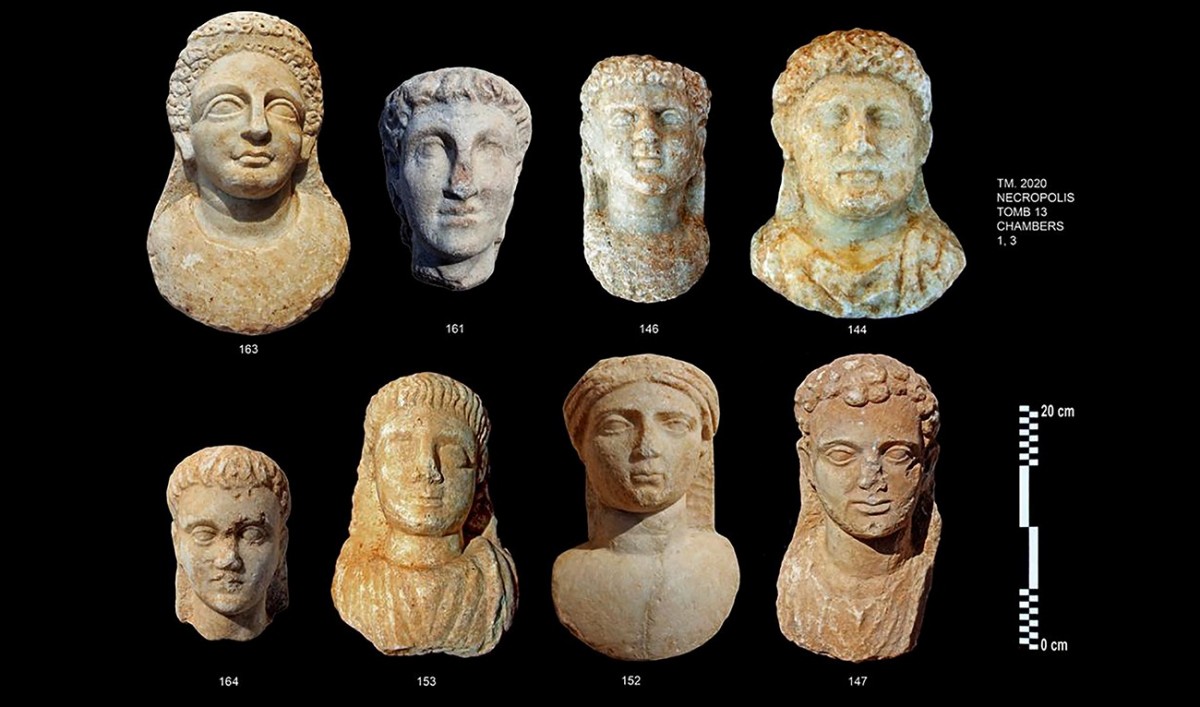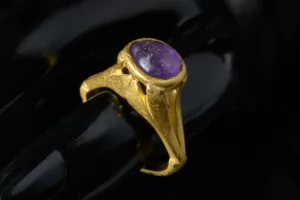We’re often drawn to rare finds in unexpected places. History-making archaeological digs that shed light on humanity’s past. This year, there was no mysterious monolith in the desert to keep us on the edge of our seats. But there were some incredible finds, as tiny as an insect trail in a famous artwork and as grand as an entire city.
Below are 12 of the most exciting art and design discoveries of 2021.
A warty pig gets its due
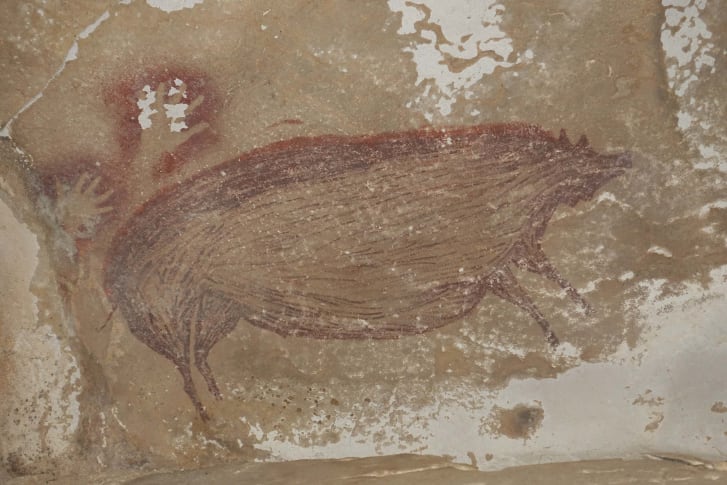
Introducing the first known animal to inspire a portrait: the warty pig.
Credit: Maxime Aubert
After a remarkable find in an Indonesian cave on the island of Sulawesi. A depiction of a warty pig is believes to be the oldest surviving image of an animal. At least 45,500 years old, archaeologists identify the warty pig in the artwork as such due to its hornlike protrusions. The red ocher-color scene features three pigs altogether, with one possibly observing a fight between its two companions.
A golden mask from a sacrificial pit
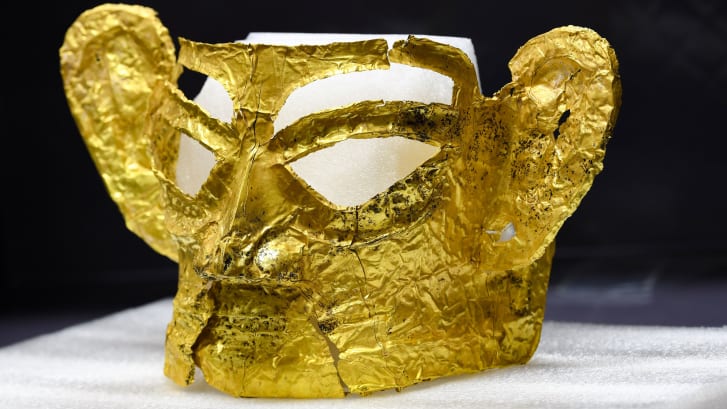
This golden mask is one of 500 relics recently discovers from a 4.6-square-mile site in southwest China. Credit: CHINE NOUVELLE/SIPA/Shutterstock
In June, a lightweight gold mask was one of around 500 relics recently excavates from a group of sacrificial pits in southwest China, at the archaeological site Sanxingdui located near Chengdu. Thousands of artifacts was found at the 4.6-square-mile site since a local farmer accidentally locates it a century ago. According to the state-run press agency Xinhua, the mask was likely part of a larger bronze head made during the late Shang dynasty, whose rule ends in 1046 BC. Among the other discoveries were ivory relics, bronze figurines and a jade knife.
A gold and purple amethyst ring that may have been worn to prevent hangovers was found at a site where (of course) one of the largest known ancient wineries once stood, the Israel Antiquities Authority announced in November. The jewel was located in the Israeli city of Yavne, quite close to the remains of a warehouse containing wine vessels known as amphorae. The ring’s owner was probably a wealthy Byzantine who lived between the 3rd and 7th centuries (and would likely be surprise to learn that we’re still hunting for a good hangover cure 1,500 years later).
Elie Haddad, a co-director of the excavation, said in a statement that the item may have “belonged to the owner of the magnificent (winery) warehouse, to a foreman” or to an “unlucky visitor, who dropped and lost their precious ring.”
A surprise Rembrandt

A lost Rembrandt painting was discover after it was damage and sent to be restore Credit: Associated Media Press Agency
When an artwork fell off the wall in a Roman country house in 2016, what starts as a straightforward request to restore the piece set off an unexpected chain of events. It turned out to be a lost Rembrandt painting. Once believed to have survived only through copies held at major institutions. This summer, the Italian Heritage Foundation confirmed “The Adoration of the Magi,” an oil on paper mounted on canvas, an original made by the prolific Dutch master. Rembrandt painted the work in 1632-33, and it depicts three men meeting the baby Jesus for the first time.
An ancient city slowly uncovered
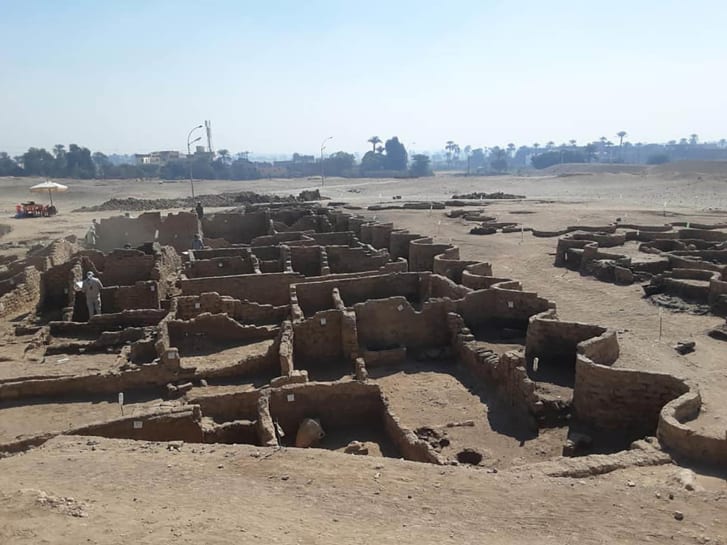
This 3,000-year-old city dates to the reign of Amenhotep III. Credit: From Dr. Zahi Hawass/Facebook
What was the biggest reveal of the year? An entire 3,000-year-old city — the largest discovered in Egypt — unearthed from beneath the sand. Archaeologists began excavating “The Rise of Aten,” which was discover on the western bank of Luxor.
The discovery of the lost city is the second most important archeological discovery since the tomb of Tutankhamun .
As of April, archaeologists had uncovered much of the city’s southern half. Finding intact houses with walls up to 10 feet high, a large bakery and a burial site containing a skeleton. They also found rooms in the homes were fill with pottery vessels, spinning tools, weaving , and jewelry still present. It was all “left by the ancient residents as if it were yesterday,” according to the statement.
Tiny beads with historical implications
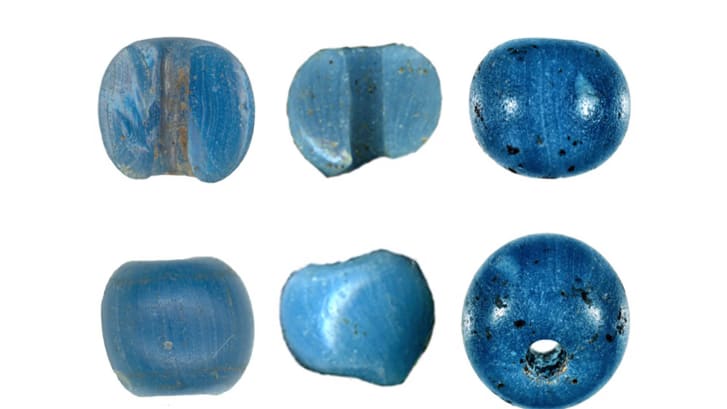
Some blueberry-sized Venetian beads were unearth at Alaska’s Punyik Point. It is a famous archaeological site that sits on an ancient trade route. Credit: American Antiquity, January 2021
Blueberry-sized Venetian beads that were excavated in northern Alaska in the mid-2000s are now believed to be the earliest known European-made objects in North America, predating Christopher Columbus’s journey across the Atlantic. In January, the University of Alaska Fairbanks published a study that the beads may have arrived between 1440 and 1480. It was decades before Columbus set sail in 1492.
Dozens of fragments of a Dead Sea Scroll bearing biblical

The Israel Antiquities Authority displays newly discover Dead Sea Scroll fragments at the Dead Sea scrolls conservation lab in Jerusalem. It was discover on Tuesday, March 16, 2021. Archaeologists announce the discovery of dozens of new Dead Sea Scroll fragments bearing a biblical text found in desert cave. They believe it was hide during a Jewish revolt against Rome nearly 1,900 years ago.
In March, the Israeli government announced that dozens of fragments of a Dead Sea Scroll bearing biblical text were found by archaeologists working in the Judean Desert.
Knife-wielding spider god mural
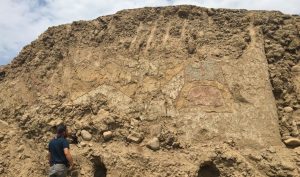
Also in March, researchers announced that they had identified a 3,200-year-old mural depicting a spider god holding a knife, which was discovered in northern Peru in 2020 on the side of an adobe temple, part of a site that has been mostly destroyed by local farmers.
A 2,000-year-old marble head of a young Augustus Octavia

In May, a 2,000-year-old marble head of a young Augustus Octavian, Rome’s first emperor, was discovered in the Italian town of Isernia, during the repair of a badly damaged medieval wall.
Iron-Age era grave

In August, new DNA analysis revealed that a warrior found in an Iron-Age era grave in Finland may have been non-binary.
Another insect discovered in a Van Gogh painting
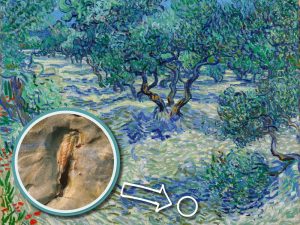
In October, the Dallas Museum of Art exhibited new findings on Vincent Van Gogh’s olive grove paintings, including the trail of an insect that unfortunately landed in his paint, which provide evidence of where at least one of the works may have been created.
Egypt’s lost sun temples

In November, archaeologists revealed that they believed they’d found one of Egypt’s lost “sun temples,” dating from the mid-25th century BC, beneath another temple at Abu Ghurab.







